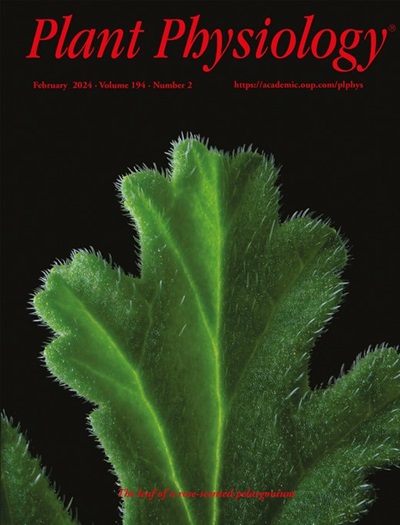Plant PI-PLC signaling in stress and development
IF 6.5
1区 生物学
Q1 PLANT SCIENCES
引用次数: 0
Abstract
Phosphoinositide-specific phospholipase C (PI-PLC) signaling is involved in various plant stress and developmental responses. Though several aspects of this lipid signaling pathway are conserved within animals and plants, clear differences have also emerged. While animal PLC signaling is characterized by the hydrolysis of PIP2 and production of IP3 and DAG as second messengers to activate Ca2+ and PKC signaling, plant PI-PLCs seem to predominantly use PIP as substrate and convert IP2 and DAG into inositolpolyphosphates and phosphatidic acid (PA) as plant second messengers. Sequencing of multiple plant genomes confirmed that plant PLC signaling evolved differently from animals, lacking homologs of the IP3 gated-Ca2+ channel, PKC and TRP channels, and with PLC enzymes resembling the PLCζ subfamily, which lacks the conserved PH domain that binds PIP2. With emerging tools in plant molecular biology, data analyses, and advanced imaging, plant PLC signaling is ready to gain momentum.求助全文
约1分钟内获得全文
求助全文
来源期刊

Plant Physiology
生物-植物科学
CiteScore
12.20
自引率
5.40%
发文量
535
审稿时长
2.3 months
期刊介绍:
Plant Physiology® is a distinguished and highly respected journal with a rich history dating back to its establishment in 1926. It stands as a leading international publication in the field of plant biology, covering a comprehensive range of topics from the molecular and structural aspects of plant life to systems biology and ecophysiology. Recognized as the most highly cited journal in plant sciences, Plant Physiology® is a testament to its commitment to excellence and the dissemination of groundbreaking research.
As the official publication of the American Society of Plant Biologists, Plant Physiology® upholds rigorous peer-review standards, ensuring that the scientific community receives the highest quality research. The journal releases 12 issues annually, providing a steady stream of new findings and insights to its readership.
 求助内容:
求助内容: 应助结果提醒方式:
应助结果提醒方式:


